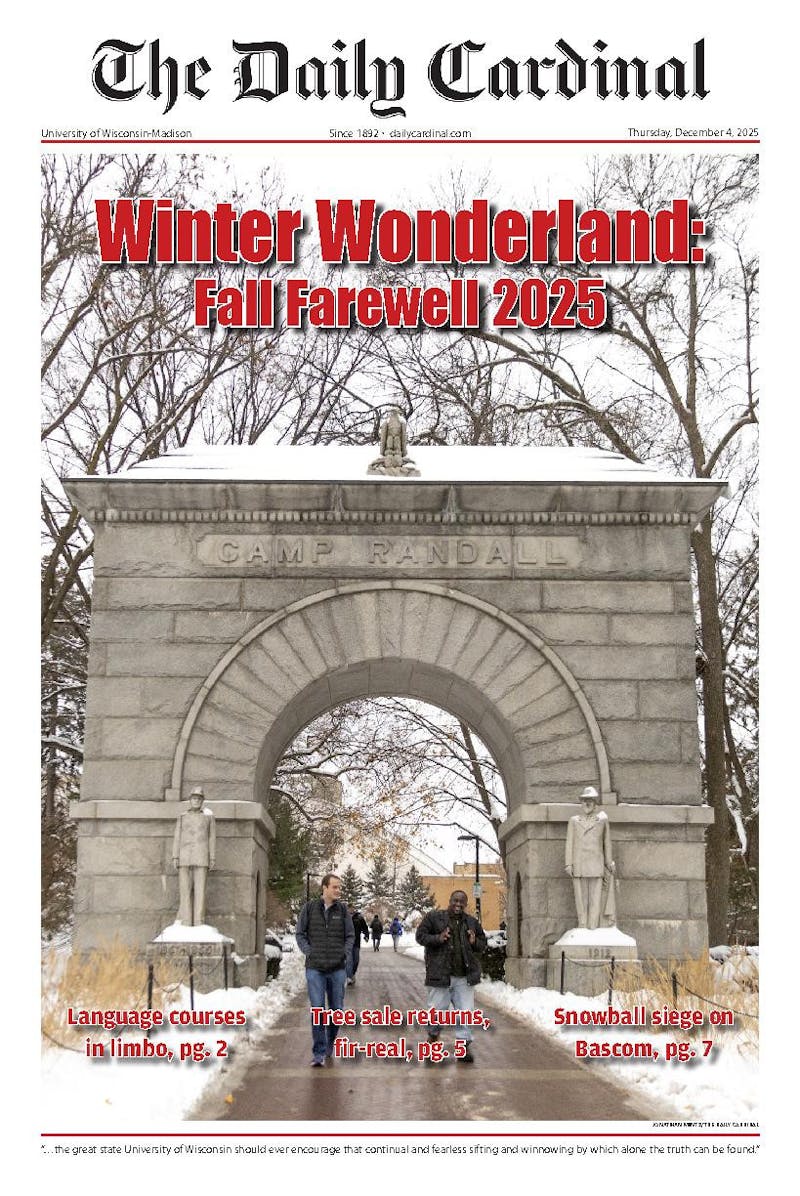War is a topic that receives much attention in the art world. Through visual expression, many artists seek to expose wartime atrocities and bring to light human consequences and tragedies. The most recent exhibition at the Chazen Museum of Art, 800 Unversity Ave., is a series of 36 etchings by Jake and Dinos Chapman that take a cynical stance on the topic and laugh in the face of those artists who attempt statements against war.
Titled The Disasters of War,\ the Chapman Brothers' exhibition makes a direct reference to a series of etchings of the same title by Spanish romanticist Francisco Goya. Goya's somber etchings depict the gore and violence of Napoleon's campaign against Spain while commenting on many important political figures. The Chapman Brothers respond to Goya's dramatic imagery with a sarcastic and playful eye in an attempt to render futile any profundity on the part of war-critical artists.
Putting a unique spin on celebrated works of past artists is a technique that has proven extremely effective. There are a few of the Chapman Brothers' etchings that, in the spirit of Marcel Duchamp and Édouard Manet, use this strategy with great success. One two-part etching first shows an unobstructed view of Goya's trademark imagery: a fallen man tormented by bats and owls, lost in a barren nighttime scene. The second part of the etching presents the reverse angle of the first scene, enlightening the viewer to the fact that the drama is nothing more than a two-dimensional wooden cutout.
Other pieces in ""The Disasters of War"" take a more humorous approach. One such etching shows a crucifixion scene with the caption, ""Oi Peter, I can see your house from here."" Another creates an effective mockery of political cartoons by placing nonsensical labels over a multitude of incoherent symbolic images.
Etchings that are both aesthetically and conceptually sound seem to be the exception, rather than the rule for this series, however. The Chapman Brothers, known for their shocking and grotesque sexual imagery, utilize their claim to fame as the source of most of their commentary. Phalluses, some expertly rendered, others childishly sketched, litter most of the works. Children and adults with misplaced and deformed genitalia, imagery popularized by the brothers' sculptural works, distract from the biting criticism of the more subtle etchings.
Although it is most likely extremely satisfying for the Chapman Brothers to be able to dismiss critics of their work as prudish or too unintelligent to see the real meaning of their grotesque imagery, the use of these motifs renders their entire exhibition hypocritical. ""The Disasters of War"" makes a terrific argument against artists who use the overwhelmingly convenient topic of war. However, the Chapmans' use of grotesque imagery to illicit viewer response is altogether too convenient as well, and ultimately sidetracks the exhibition from what would otherwise be a poignant artistic standpoint.
\






